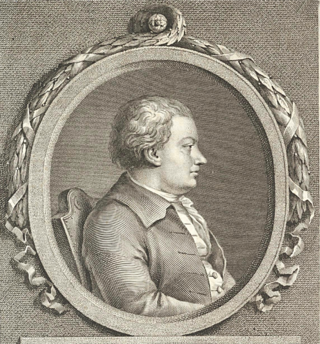
Anders Jahan Retzius was a Swedish chemist, botanist and entomologist.

Perizoma flavofasciata, the sandy carpet or sandy rivulet, is a moth of the family Geometridae. The species was first described by Carl Peter Thunberg in 1792. It is found in most of Europe and northern Africa and east across the Palearctic to the Urals and the Altai Mountains. The species prefers meadow valleys, floodplains, waterside areas, bushy meadows and gardens. In the Alps it rises to 1500 metres.
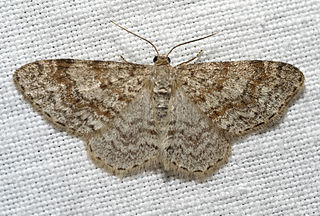
Larentiinae is a subfamily of moths containing roughly 5,800 species that occur mostly in the temperate regions of the world. They are generally considered a subfamily of the geometer moth family (Geometridae) and are divided into a few large or good-sized tribes, and numerous very small or even monotypic ones which might not always be valid. Well-known members are the "pug moths" of the Eupitheciini and the "carpets", mainly of the Cidariini and Xanthorhoini. The subfamily was described by Philogène Auguste Joseph Duponchel in 1845.
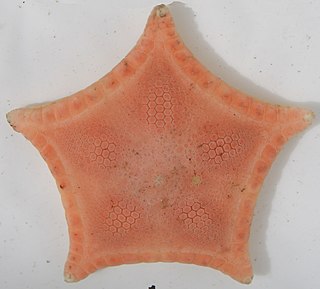
Ceramaster is a genus of cushion stars in the family Goniasteridae. The species in this genus have no arms. They live in deeper waters than most sea stars.
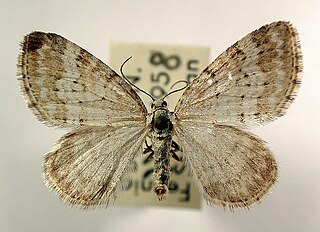
Perizoma albulata, the grass rivulet, is a moth of the genus Perizoma in the family Geometridae. The species was first described by Michael Denis and Ignaz Schiffermüller in 1775.

Perizoma alchemillata, the small rivulet, is a moth of the genus Perizoma in the family Geometridae. The species was first described by Carl Linnaeus in his 1758 10th edition of Systema Naturae.
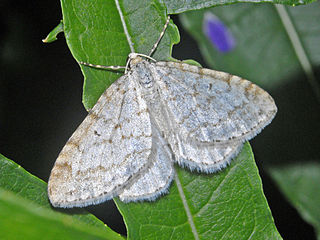
Mesotype is a genus of moths in the family Geometridae erected by Jacob Hübner in 1825. It is sometimes included in Perizoma.

Perizoma is a genus in the geometer moth family (Geometridae). It is the type genus of tribe Perizomini in subfamily Larentiinae. The tribe is considered monotypic by those who include the genera Gagitodes, Martania and Mesotype in Perizoma. Some other less closely related species formerly placed here are now elsewhere in the Larentiinae, e.g. in Entephria of the tribe Larentiini.

Pterapherapteryx is a monotypic moth genus in the family Geometridae erected by John Curtis in 1825. Its only species, Pterapherapteryx sexalata, the small seraphim, was first described by Anders Jahan Retzius in 1783. It is found in central and northern Europe and south-east Russia.

Gagitodes sagittata, the marsh carpet, is a moth of the family Geometridae. The species was first described by Johan Christian Fabricius in 1787. It is found in eastern Asia, including Japan, Korea and China and in central and northern Europe. It is sometimes included in the genus Perizoma

Mesotype didymata, the twin-spot carpet, is a moth of the family Geometridae. The species was first described by Carl Linnaeus in his 1758 10th edition of Systema Naturae. Its genus is sometimes included in Perizoma.

Perizomini is a tribe of geometer moths under subfamily Larentiinae. It was first proposed by Claude Herbulot in 1961. It contains four genera, including the eponymous Perizoma.

Perizoma affinitata, the rivulet, is a species of moth of the family Geometridae. It was first described by James Francis Stephens in 1831 and it is found in most of Europe.

Perizoma blandiata, the pretty pinion, is a moth of the family Geometridae. The species was first described by Michael Denis and Ignaz Schiffermüller in 1775. It is found from most of central and northern Europe to central Asia as far as the Khangai Mountains.

Perizoma hydrata is a species of moth of the family Geometridae. It is found from most of Europe and the Caucasus through western Siberia to the Sayan Mountains and Altai and northern Mongolia.
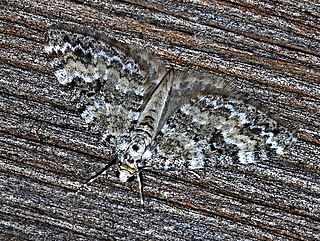
Perizoma minorata, the heath rivulet, is a moth of the family Geometridae. The species was first described by Georg Friedrich Treitschke in 1828.

The parsnip moth or parsnip webworm is a moth of the family Depressariidae. It is found in most of Europe, except Portugal and most of the Balkan Peninsula. This species has also been introduced into New Zealand.

Perizoma obsoletata is a species of moth of the family Geometridae. It is found in the Pyrenees, the Massif Central, the Apennine Mountains, on Corsica, in the Alps and Swiss Prealps, the Jura Mountains, the Black Forest, the Swabian Jura, the Sudetes, the High Tatras, the Carpathian Mountains and the mountains of the Balkan Peninsula.

Mesotype verberata is a moth in the family Geometridae first described by Giovanni Antonio Scopoli in his 1763 Entomologia Carniolica.


















